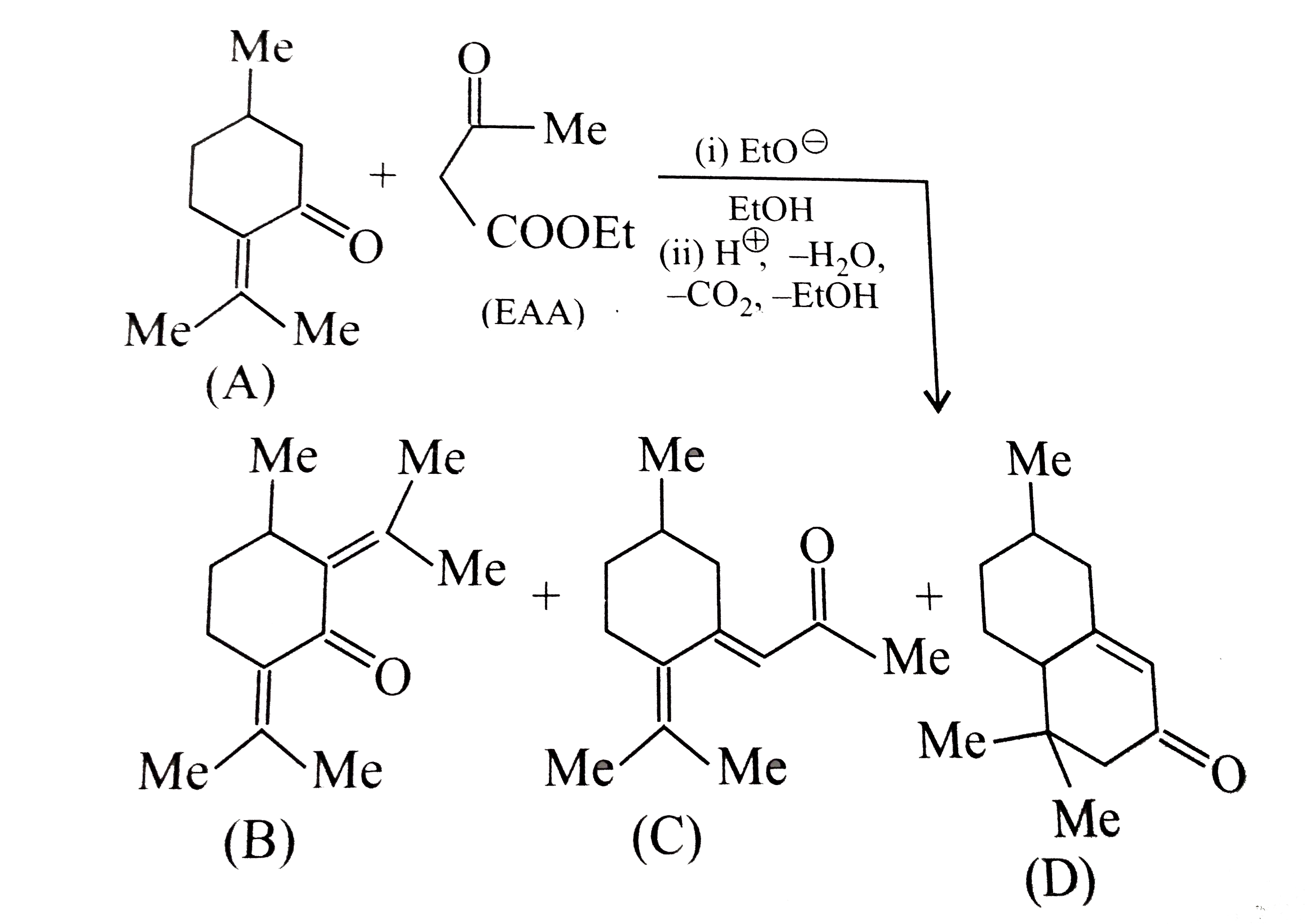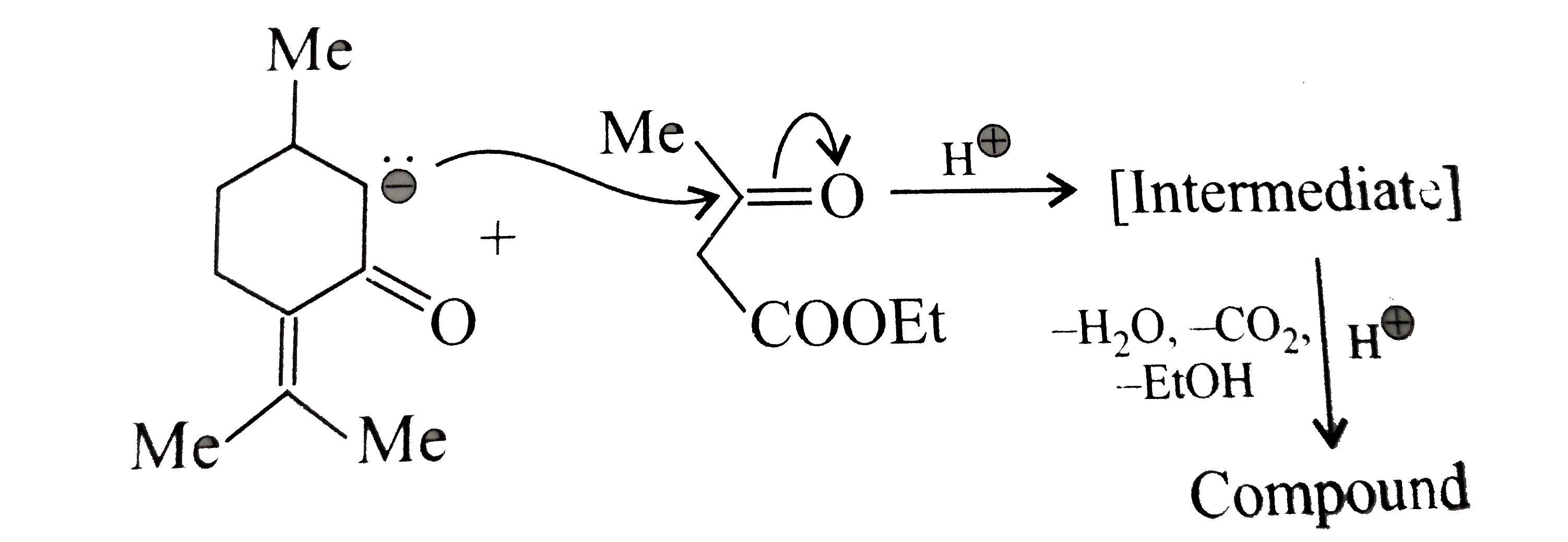Activationenergies for different reactions are give below
a. products Ea=14K.Cal b. products, Ea=15K.cal
c. products, Ea=1K.Cal d. products, Ea=10K.cal
IF the temperature increases by for which reactions the temperature coefficients are maximum and minimum respectively.Solution in Telugu
a&b
b&c
b&d
d&b
The correct Answer is:C
Step by step video, text & image solution for Activationenergies for different reactions are give below a. Ato products Ea=14K.Cal b. Bto products, Ea=15K.cal c. Cto products, Ea=1K.Cal d. Dto products, Ea=10K.cal IF the temperature increases by 10^(@)C for which reactions the temperature coefficients ((k_(1)+10)/(k_(1))) are maximum and minimum respectively. by Chemistry experts to help you in doubts & scoring excellent marks in Class 12 exams.
Topper's Solved these Questions
- BOOK - AAKASH SERIESCHAPTER - CHEMICAL KINETICSEXERCISE - LEVEL-1 (EXERCISE -I COLLISION THEORY:)18videos
CHEMICAL KINETICS
- BOOK - AAKASH SERIESCHAPTER - CHEMICAL KINETICSEXERCISE - LEVEL-1 (EXERCISE -I ORDER MOLECULARIT AND HALF LIFE:)45videos
CHEMICAL KINETICS
- BOOK - AAKASH SERIESCHAPTER - CHEMICAL KINETCSEXERCISE - EXERCISE - 3.245videos
CHEMICAL KINETCS
- BOOK - AAKASH SERIESCHAPTER - CHEMICAL THERMODYNAMICSEXERCISE - Additional Practice Exercise54videos
CHEMICAL THERMODYNAMICS
Similar Questions
For an exothermic chemical process occurring in two steps as
(i) A+B→X (slow) (ii) X→AB (fast)
The progress of the reaction can be best described by08:44View SolutionWhich of the foloiwng is correct?
01:09View SolutionDiscuss on the kinetic spontaneity of a chemical reaction. Is a slow reaction spontaneous? Why?
02:34View SolutionWhich among the following is not an exact differential?
View SolutionConsider the following reaction in which compound (A) on reaction with EAA(MeCOCH2COOEt) in the presence of NaOEt/EtOH gives a product which on hydrolysis by different mechanisms.

One of the mechanisms in which an aldol addition by the carbanion of (A) takes place on the (C=O) of EA A (acceptor) is given below. Compound fromed by this mechanism is:
 View Solution
View SolutionFor the reaction: A+B+Q⇔C+D, if the temperature is increased, then concentration of the products will
View SolutionWhich of the following compounds gives faster EAS reaction than benzene ?
31:40View SolutionThe activation energies for the two reactions are Ea and Ea^(') with E_(a)gtE_(a)^(') . If the temperature of the reaction system is increased from T_(1) to T_(2) . Predict which alternative is correct. (k^(')) are the rate constants at highest temperature.
View SolutionConsider following two reactions
A→Product,d[A]dt=k1[A]00
B→Product,d[B]dt=k1[A]00
kaandk2 are expressed are expressed in term of molarity (mol L−1) and time (s−1) as :02:14View SolutionFor the exothermic reaction, A+B→C+D.ΔH is the heat of reaction and Ea is the activation energy. The activation energy for the formation of A + B will be
05:03View SolutionEAS- C Part
View SolutionShow the exact structure of the product (or products) of each EAS reaction below.State whether each reaction is expected to be faster or slower than the corresponding reaction of benzene.
01:25View Solutionअभिक्रिया A+B+Q<−→C+D, के लिए, ताप बढ़ाने पर उत्पादों का सान्द्रण हो जायेगा
04:30View SolutionThe rate of the chemical reaction doubles for an increase of 10 K in absolute temperature from 298 K. Calculate Ea.
03:00View SolutionCertain order of reaction rate constant is at 500K and 700K temperature are 0.02S^(-1) and 0.07S^(-1) respectively. Calculate Ea and K of this reaction.
01:13:50View Solution

